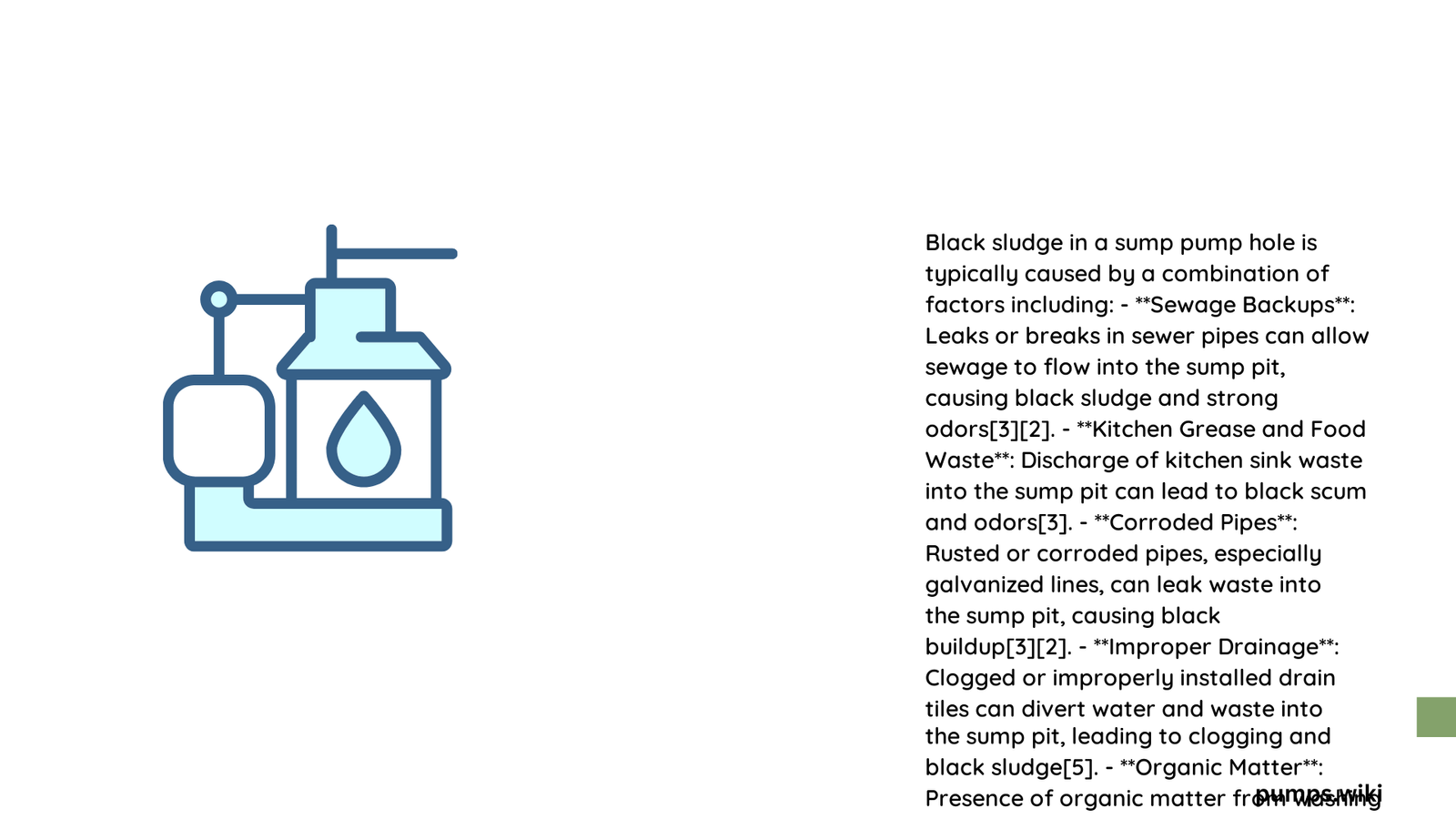Black sludge in a sump pump hole is a common yet concerning issue for homeowners, indicating potential water contamination, bacterial growth, and underlying drainage problems. This dark, viscous substance can develop from various environmental factors, water source contaminants, and maintenance challenges, potentially compromising your home’s water management system and posing health risks if left untreated.
What Causes Black Sludge in Sump Pump Hole?
Environmental Triggers for Sludge Formation
Black sludge accumulation in sump pump holes can result from multiple interconnected factors:
| Environmental Factor | Impact on Sludge Formation |
|---|---|
| Rainfall Intensity | Increases water flow, bringing dirt and organic matter |
| Vegetation Proximity | Root intrusion can cause blockages and contamination |
| Soil Composition | Clay-rich soils contribute to sediment buildup |
Water Source Contamination Mechanisms
- Household Water Inputs
- Washing machine discharge
- Kitchen sink waste
- Bathroom runoff
-
Potential grease and soap scum accumulation
-
Groundwater Characteristics
- Iron-rich well water
- Mineral sediment deposits
- Organic decomposition processes
How Does Black Sludge Develop in Sump Pump Systems?
Structural and Design Vulnerabilities
Sump pump systems can develop black sludge due to several critical factors:
- Unsealed or improperly covered sump pit
- Compromised drain tile functionality
- Corroded pipe infrastructure
- Inadequate water filtration mechanisms
What Health Risks Accompany Black Sludge?
Potential health hazards include:
- Bacterial contamination
- Potential pathogen exposure
- Respiratory irritation
- Skin contact risks
How Can Homeowners Remove Black Sludge?
Recommended Cleaning Protocol
- Preparation
- Wear protective equipment
- Disconnect electrical components
-
Remove existing pump
-
Cleaning Process
- Use EPA-approved disinfectants
- Scrub pit thoroughly
- Rinse with clean water
-
Dry completely
-
Preventative Measures
- Install proper pit cover
- Regular maintenance schedule
- Professional inspection annually
What Prevention Strategies Work Best?
Maintenance Recommendations
- Install high-quality drain strainers
- Implement regular pit inspections
- Maintain proper pump sizing
- Check drainage systems quarterly
- Monitor water quality
Technical Insights for Sump Pump Protection
Advanced Prevention Techniques
- Use enzyme-based cleaning solutions
- Implement moisture barriers
- Consider professional waterproofing
- Upgrade drainage infrastructure
Expert Recommendations

Homeowners should approach black sludge in sump pump holes proactively, combining regular maintenance, professional assessments, and strategic infrastructure improvements to ensure long-term water management system reliability.
Professional Consultation
For persistent or complex sludge issues, consulting a certified water management professional is recommended to diagnose and resolve underlying system challenges.
Final Thoughts
Understanding the multifaceted nature of black sludge formation empowers homeowners to take decisive action, protecting their property’s structural integrity and maintaining a healthy living environment.
